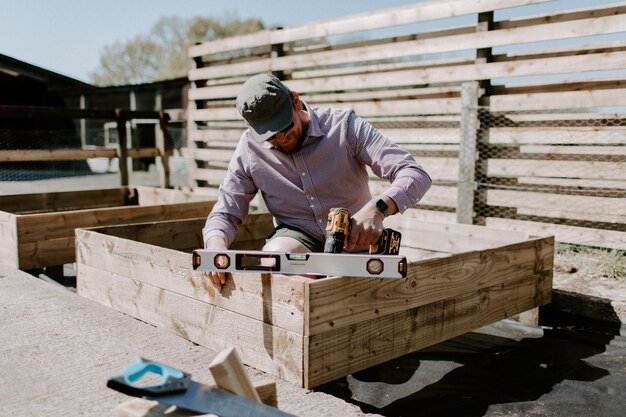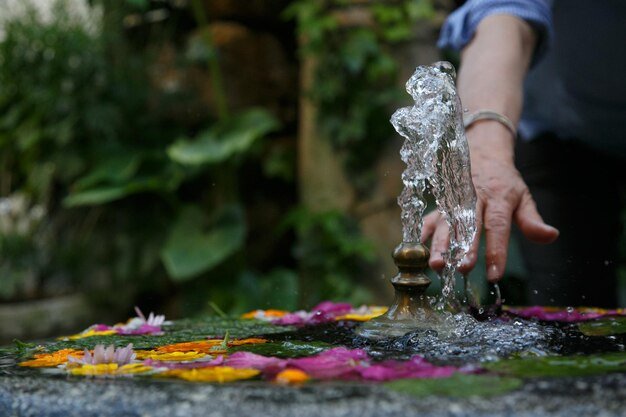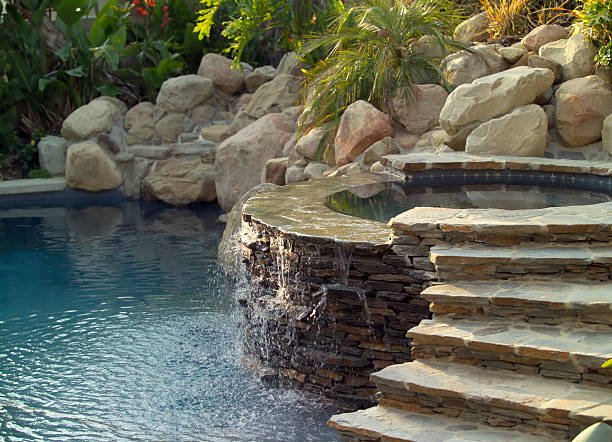Garden Water Features Made Simple: Tips & Tricks
Introduction
Garden water features are a timeless addition to any outdoor space, offering both visual appeal and a sense of tranquility. Whether it’s a bubbling fountain, a serene pond, or a cascading waterfall, these elements can transform an ordinary garden into a peaceful retreat. Water features not only enhance the aesthetics of your yard but also create a soothing ambiance that helps reduce stress and promotes relaxation. The gentle sound of flowing water can mask unwanted noise, making your garden a perfect escape from the hustle and bustle of daily life.
Understanding Garden Water Features
Garden water features come in various forms, each offering unique benefits and charm. A pond, for instance, can serve as a focal point in your garden, attracting wildlife like birds and frogs. Fountains, on the other hand, are versatile and can be installed in small or large spaces, providing the soothing sound of flowing water. Waterfalls add a dramatic touch, especially when paired with rocks and plants, while birdbaths are simple yet effective in attracting feathered friends.
When choosing a water feature, it’s essential to consider your garden’s size, style, and your personal preferences. For example, a modern garden might benefit from a sleek, minimalist fountain, while a rustic garden could be enhanced by a natural-looking pond or waterfall. Understanding the different types of water features and their characteristics will help you make an informed decision that aligns with your vision and lifestyle.
Benefits of Garden Water Features

Adding a water feature to your garden offers numerous benefits beyond just aesthetics. For starters, it enhances the overall beauty of your outdoor space, creating a focal point that draws the eye and adds depth to your landscape. The sound of flowing water can also create a calming atmosphere, making your garden a perfect place to unwind after a long day. Additionally, water features attract wildlife such as birds, butterflies, and even frogs, bringing your garden to life with natural activity.
Another significant advantage is the potential increase in property value. A well-designed water feature can make your home more appealing to potential buyers, setting it apart from other properties. Moreover, the presence of water in your garden can help reduce stress and promote mental well-being. The gentle sounds and visual appeal of a fountain or pond can create a meditative environment, encouraging relaxation and mindfulness. Whether you’re looking to boost curb appeal or create a personal sanctuary, a garden water feature is a worthwhile investment.
Choosing the Right Water Feature for Your Garden

Selecting the perfect water feature for your garden requires careful consideration of several factors. First, assess the available space in your yard. A small garden might benefit from a compact fountain or a tabletop water feature, while a larger area can accommodate a pond or waterfall. Your budget is another crucial factor, as some features, like elaborate ponds, may require a significant investment in materials and maintenance.
It’s also important to match the water feature with your garden’s style. For example, a modern garden might pair well with a sleek, geometric fountain, while a cottage-style garden could be enhanced by a naturalistic pond surrounded by lush plants. Don’t forget to consider the level of maintenance you’re willing to commit to, as some features, like ponds, require more upkeep than others. By taking these factors into account, you can choose a water feature that complements your garden and fits your lifestyle seamlessly.
Essential Tools and Materials
Before you start installing a garden water feature, it’s important to gather the right tools and materials. Basic items like a shovel, level, and measuring tape are essential for preparing the site and ensuring everything is properly aligned. You’ll also need a durable liner if you’re building a pond or waterfall, as this prevents water from seeping into the ground. A reliable pump is another critical component, as it keeps the water circulating and prevents stagnation.
In addition to these, consider using stones or rocks to create a natural look around your water feature. These not only enhance the visual appeal but also help secure the liner in place. Aquatic plants like water lilies or lotus can be added to ponds for a touch of greenery and to improve water quality. Finally, don’t forget about lighting—submersible LED lights can highlight your water feature at night, creating a magical ambiance in your garden.
Step-by-Step Guide to Installing a Garden Water Feature

The first step in installing a water feature is selecting the perfect location. Choose a spot that is visible from your home or seating area, ensuring you can enjoy the view and sounds of flowing water. Avoid placing it under trees, as falling leaves can clog the pump and increase maintenance. Once you’ve chosen the location, prepare the ground by clearing debris and leveling the area.
Next, set up the base for your water feature. For a pond, dig the hole to the desired depth and shape, then lay the liner carefully to avoid wrinkles. Install the pump and connect it to the water flow system, ensuring everything is secure and functioning properly. Add decorative elements like stones, plants, and lighting to complete the look. Finally, fill the feature with water, turn on the pump, and make any necessary adjustments to achieve the desired flow and appearance.
Maintenance Tips for Long-Lasting Water Features

Proper maintenance is key to keeping your garden water feature in pristine condition. Regularly clean the water to prevent debris buildup and algae growth. Use a skimmer net to remove leaves and other floating debris, and consider adding an algaecide to keep the water clear. It’s also important to check the pump frequently to ensure it’s functioning efficiently. Clean the pump filter as needed to avoid clogs and maintain optimal water circulation.
Seasonal care is equally important. During the fall, cover your water feature with a net to catch falling leaves. In winter, if you live in a cold climate, consider winterizing your feature by draining the water and storing the pump indoors. For smaller features like fountains, you can simply bring them inside. Regularly inspect the liner for any signs of wear or damage, and repair or replace it as necessary. By following these maintenance tips, you can extend the life of your water feature and enjoy its beauty year-round.
Budget-Friendly DIY Water Feature Ideas

Creating a stunning water feature doesn’t have to break the bank. One simple and affordable option is a container water garden. All you need is a large pot or basin, a small pump, and a few aquatic plants. Fill the container with water, place the pump inside, and arrange the plants around it. This DIY project is perfect for small spaces like patios or balconies.
Another budget-friendly idea is a solar-powered fountain. These fountains use solar energy to operate, eliminating the need for electrical wiring. You can also get creative by upcycling old items like ceramic pots, metal buckets, or even wine barrels into unique water features. Add a small pump, some decorative stones, and a few plants, and you’ve got a one-of-a-kind feature that adds charm to your garden. DIY projects like these not only save money but also allow you to personalize your outdoor space.
Common Mistakes to Avoid

When installing a garden water feature, it’s easy to make a few common mistakes that can affect its functionality and appearance. One of the most frequent errors is choosing the wrong size or location. A feature that’s too large can overwhelm your garden, while one that’s too small may go unnoticed. Similarly, placing it in a spot with poor drainage or too much shade can lead to issues like water stagnation or excessive debris buildup.
Another mistake is opting for an overly complicated design. While elaborate features may look impressive, they often require more maintenance and are prone to technical problems. Ignoring water circulation and filtration is another pitfall. Without proper circulation, the water can become stagnant, leading to algae growth and unpleasant odors. Always ensure your feature includes a reliable pump and filtration system to keep the water clean and flowing smoothly.
Conclusion
Adding a garden water feature is a rewarding project that can transform your outdoor space into a peaceful retreat. By understanding the different types of features, choosing the right one for your garden, and following proper installation and maintenance tips, you can create a stunning focal point that enhances your landscape. Whether you opt for a simple fountain or an elaborate pond, the key is to plan carefully and avoid common mistakes.
With the right approach, you can enjoy the soothing sounds and visual appeal of flowing water for years to come. Don’t be afraid to get creative with DIY ideas or upcycled materials to stay within your budget. Start your garden water feature project today and experience the joy of a beautiful, relaxing outdoor space that you and your family can cherish.




One thought on “Garden Water Features Made Simple: Tips & Tricks”